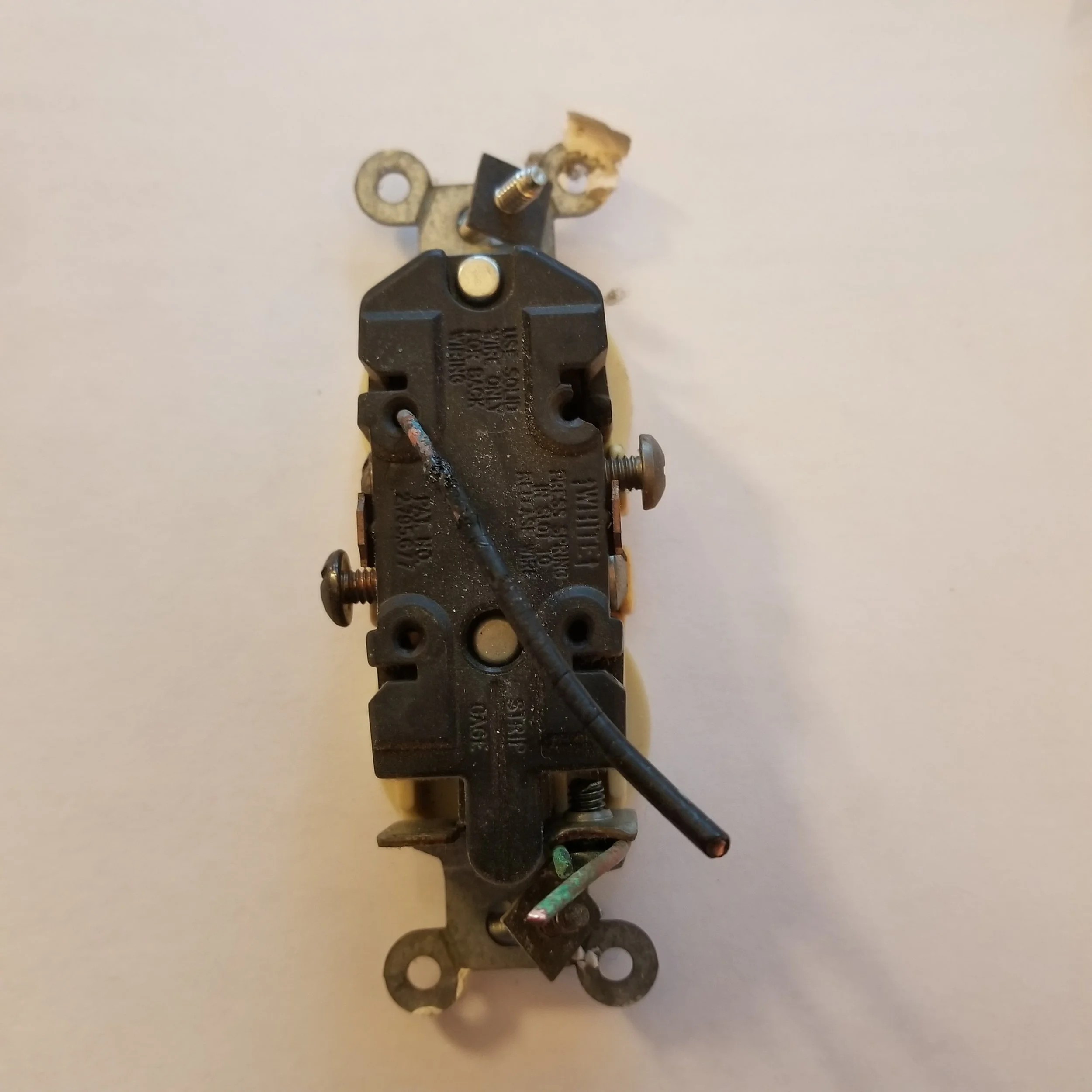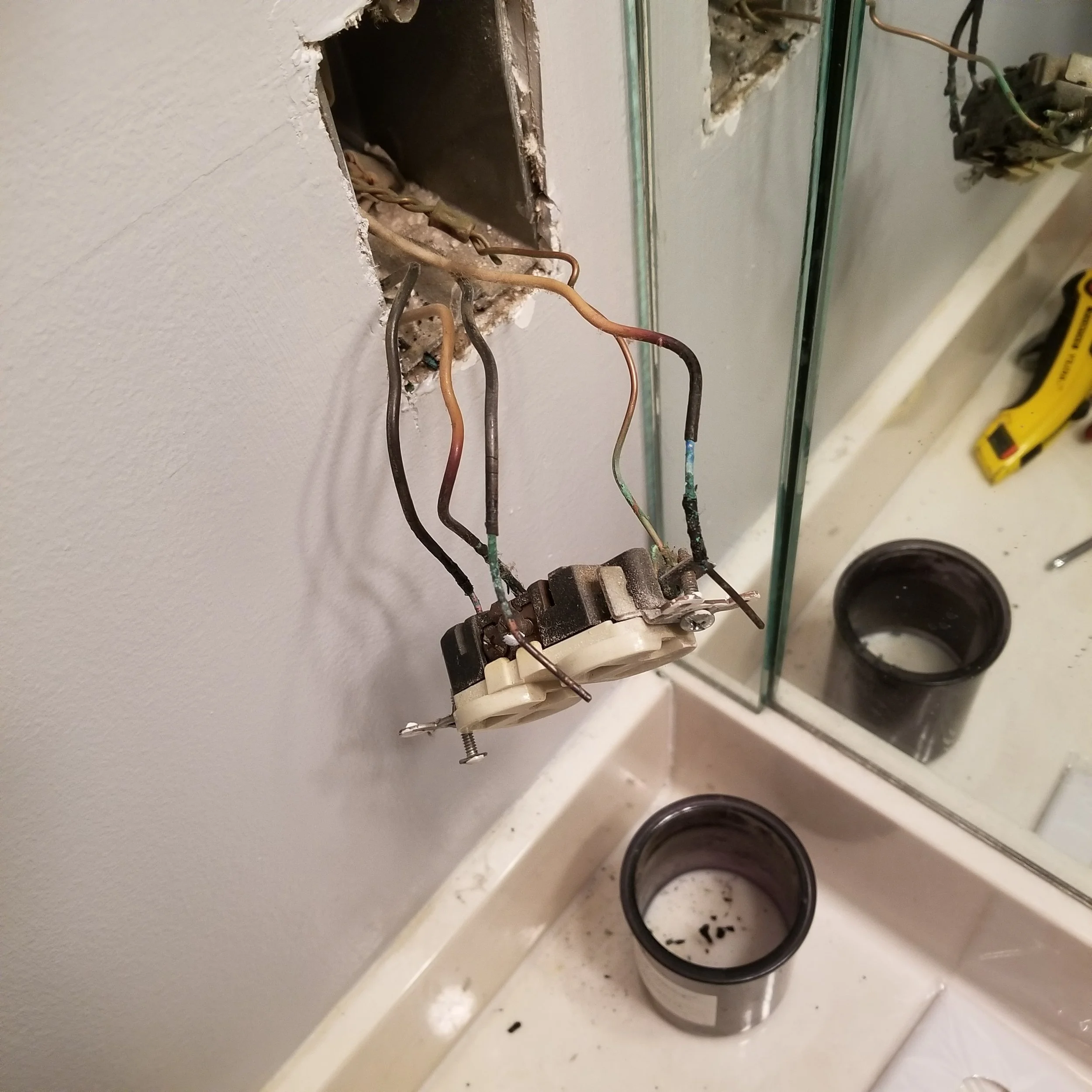Are your electrical outlets working properly?
Are you having problems with some of the electrical outlets in your house? Are some of your outlets not working, or are they warm or hot to the touch? Do some of your outlets work intermittently, depending on how the plug is positioned? Do some of your outlets look burnt or damaged?
Well, you’ve come to the right place! One of my passions is helping to teach and educate homeowners about their options when it comes to electrical repairs, and especially when it comes to being better informed about the possible causes of improperly operating outlets and switches, and what can be done to fix or improve their functionality. I can help you identify and fix the root cause(s) of nonfunctional, intermittent, or hot-to-the-touch electrical outlets.
Possible causes of dead, intermittent, or hot-to-the-touch electrical outlets
There are several potential causes of dead, intermittent, or hot-to-the-touch outlets.
1) High continuous loads on a circuit - One common cause of hot-to-the-touch outlets is when high-current devices (such as an electric heater, or vacuum cleaner) are operated for extended periods of time. If the connection path back to the electrical panel does not have good, solid, connections all the way to the panel, individual connections can overheat over time without tripping the associated circuit breaker. This can cause overheating in the wiring, oxidation on the wires, and make the connections more susceptible to overheating/fire in the future.
2) Loose or poorly terminated connections - Dead or intermittently operating electrical outlets are frequently caused by poor or loose connections in the outlet. Many times push-in connections are used in outlets (see below), or the screw terminations were not made well or have worked loose over time. If an outlet works intermittently, but you can make it work by moving the plug slightly from side to side or up and down, it probably has a loose connection.
3) Push-in connections - This is a frequent cause of intermittent and degraded connections. Most residential outlets are made with the option of allowing the connections to be made by a push-in termination at the rear of the outlet. This allows for quick connection of the wiring at installation, and allows contractors to save money (labor costs) when building a home. Unfortunately, the design of these connections is such that the wires are held in by spring contacts that have minimal surface contact with the electrical power wires. The spring contacts can degrade over time (allowing the wires to come loose), and the limited surface contact can allow oxidation to occur over time, which can create high resistance connections and overheating. This typically doesn’t happen right away, but over a period of years. These connections can degrade more quickly with high loads (such as electric heaters).
4) Aluminum wiring - Many homes built prior to 1973 use aluminum wiring (this is the case with our home). Aluminum wiring is susceptible to oxidation over time, creating high resistance connections and possible overheating concerns. There are various ways to mitigate aluminum wiring connections to minimize the potential for oxidation/overheating over time. Please contact me for more information.
5) GFCI outlets - Another frequent cause of dead outlets is that an upstream GFCI outlet has tripped and has killed the power to all of the downstream outlets that are connected to it. If your dead outlet(s) are located in areas that are susceptible to possible exposure to water (typically, bathrooms, garages, and outdoor outlets), it is very possible that a GFCI outlet somewhere in the line has tripped and removed power from the downstream outlets.
6) Various other causes - There are several other potential causes of dead, intermittent, or hot-to-the-touch outlets, but the causes listed above are the most common ones.
Electrical outlet with push-in connection - note the overheated wire and insulation
Electrical outlet with push-in connections showing signs of severe overheating
A recent example
The pictures I’ve posted on this blog are an example of a recent issue I found at a Customer’s house. The Customer’s initial complaint was that the outdoor outlets were not working. After some analysis and troubleshooting, I determined that the outdoor outlets, AND the garage outlets, AND the guest bathroom outlet were all connected to the GFCI outlet in the master bathroom. The outlet in the pictures show that the guest bathroom outlet had degraded significantly over time (note the push-in connections), causing overheating/oxidation of the “connected” wires and insulation, and essentially killing the power to all downstream outlets (the garage and outdoor outlets). After replacing the guest bathroom outlet, removing the damaged wiring, and terminating the wires properly via the screw terminals, all outlets on that circuit are now functioning properly.
CONTACT ME TODAY
If you are having any of these types of issues, you can contact me by filling out the form at this link, or you may call me at directly 859-227-8314 (if I don’t answer, please leave a message and I’ll get back to you as soon as I can).


